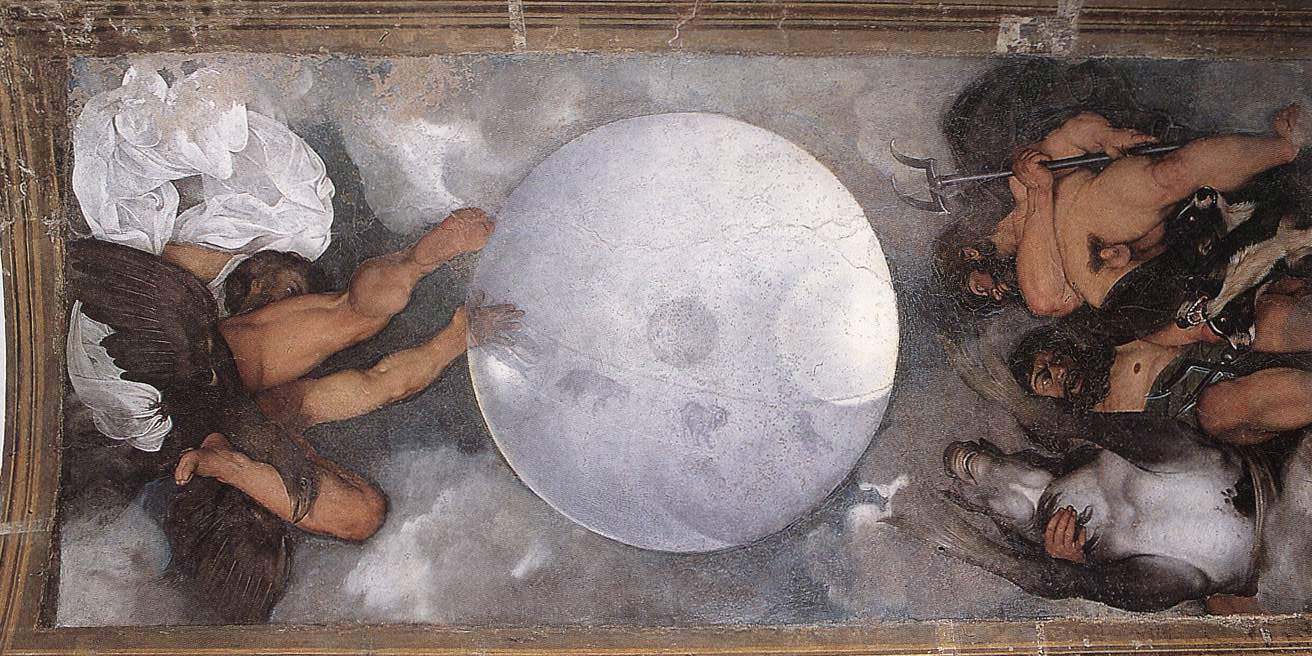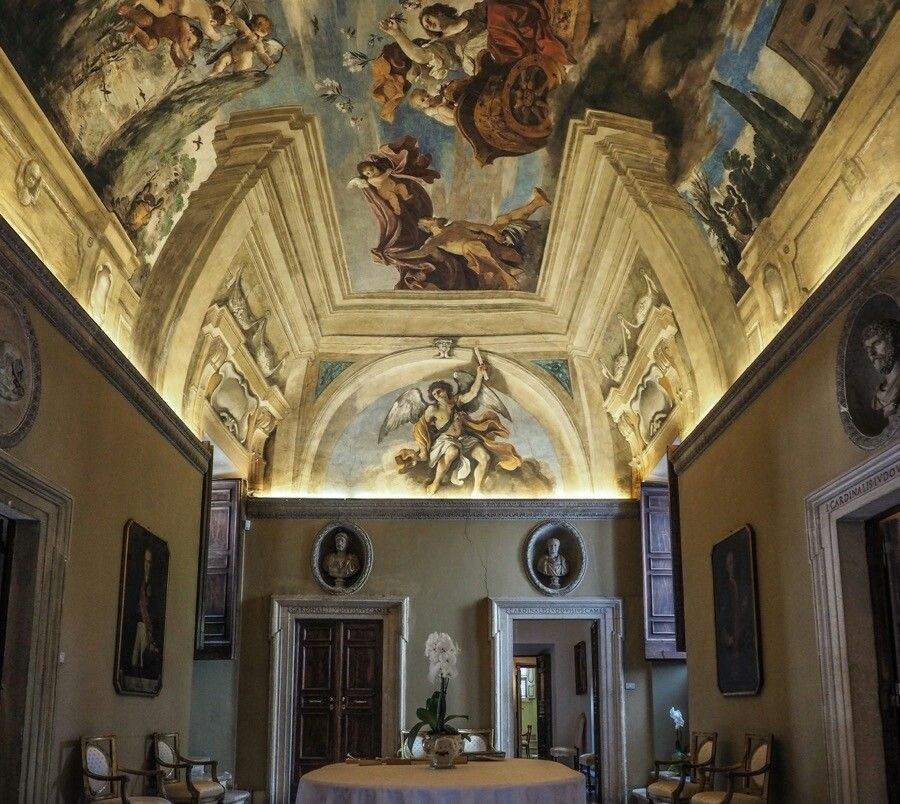Rome, Casino dell'Aurora, home of Caravaggio's only mural, goes up for auction
Going up for auction is the Casino dell’Aurora, also known as the Casino di Villa Ludovisi, or the annex of the sumptuous Ludovisi mansion, the latter of which was destroyed in 1885, which houses Caravaggio’s only known mural, the one depicting Jupiter, Neptune and Pluto and executed in 1597 for his powerful patron Francesco Maria del Monte (the Porta Pinciana villa was his at the time). “Between Via Vittorio Veneto, Porta Pinciana and Villa Borghese, from Villa (partially stacked for office use) and three garage rooms located in Rome (RM) - Via Lombardia 42/46 for a conventional area of about 2,800 square meters.” So reads, with the cold jargon of real estate ads (except to later include it “among the most prestigious beauties and architectural and landscape of pre-unification Rome”) the announcement of the sale of the complex, named after the Aurora fresco painted by Guercino. Underlying the sale are complex inheritance events that followed the passing in 2018 of the owner, Prince Nicolò Boncompagni Ludovisi. The villa was occasionally opened to the public for guided tours run by Roman cultural associations.
The auction, without auction and with asynchronous telematic mode, is set for Jan. 18, 2022, and the purchase is obviously subject to the condition precedent of the State not exercising its right of first ref usal (the Casino has been bound since 1987). Base price: 471 million euros (minimum bid 353,250,000, with raises of one million), plus the eventual buyer will have to meet the costs of restoration and restoration of non-compliant sites, amounting to about 11 million euros (the cost was deducted from the auction value). “The historic villa, although regular from the urban planning point of view,” the documentation in fact reads, “requires the restoration of the status quo ante both in the basement and in the portions subject to unauthorized modifications or not agreed with the P.A., in addition to any charge necessary to complete the preliminary process inherent in the applications for building permits in amnesty and the necessary consolidation and maintenance work on the entire villa.” The Superintendence, the documentation continues, “has carried out inspections to verify the non-conformities present in the monumental complex, following which it will be able to order the restoration of the state of the places that do not comply with the aforementioned authorizations and impose sanctions,” and always the body “has requested - in the meantime - the restoration of the architectural and artistic heritage, the demolition of some superfetations and partitions, the redoing of the installations, the restoration of the finishes of the entire property, the redoing of traces and recesses made in the masonry with techniques and materials identical to the existing ones.”

The value of 471 million euros comes mostly from the pictorial, immovable decorations, which alone are worth 432 million 647,692 euros, according to art historian Alessandro Zuccari’s expert report. Among the most valuable works are Guercino’s Toeletta di Venere (664,964.94 euros), the decoration of the Aurora room that gives the complex its name, endowed with “inseparable unity between Tassi’s perspective quadrature and Guercino’s extensive painted surfaces,” as the appraisal states (52,605,376 euros), the vault of Guercino’s Fame room (37,068.000 euros), the Room of the Landscapes frescoed by different artists namely Domenichino, Guercino, Giovanni Battista Viola and Paul Bril (30,890,946 euros), the Room of the Cupids with decorations by Giovanni Luigi Valesio (224,460 euros), and finally the mural by Caravaggio, a unicum in the entire history of art that alone is worth two-thirds of the property: 310,800,000 euros according to Zuccari’s appraisal. “It is,” Zuccari explains, “a fundamental painting in the autograph corpus of the Lombard master, both for the particularity of the technique and for the originality of the perspective setting, which reveals his Lombard background, but approaches his full stylistic-compositional maturity.” The attribution to Caravaggio, advanced as early as the 17th century by Bellori, was confirmed in 1989-90 after restoration conducted by the Superintendency of Rome. “The painting,” Zuccari further explains, “is in a good state of preservation thanks to the restoration work, which saved it from deterioration and restored it to full legibility.” It is the only mural by Merisi, executed in oil technique, and according to the appraisal it should even be “considered as a priceless work.” The estimate was made on the basis of the quotation of the Judith Beheading Holofernes recently discovered in Toulouse, attributed to Caravaggio albeit with a lively critical debate, mentioned by Zuccari.
The Casino, moreover, not only contains masterpieces by Caravaggio and Guercino, but also holds within it a collection of ancient statues also of exceptional value, within which stand out the two Dacian prisoners from the second century A.D., most likely from the Forum of Trajan, estimated by Professor Alessandro Zuccari at 550,000 euros each. And then again a large statue of Pan by an unknown author (in the 17th century it was even attributed to Michelangelo), worth 250,000 euros, a head of Marcus Aurelius from the second half of the 2nd century AD, several ancient reliefs, a funerary stele dedicated to the praetorian Quintus Vettius, and more for a total estimate of 3 million 740,000 euros for 41 sculptures.
 |
| Rome, Casino dell'Aurora, home of Caravaggio's only mural, goes up for auction |
Warning: the translation into English of the original Italian article was created using automatic tools. We undertake to review all articles, but we do not guarantee the total absence of inaccuracies in the translation due to the program. You can find the original by clicking on the ITA button. If you find any mistake,please contact us.





























